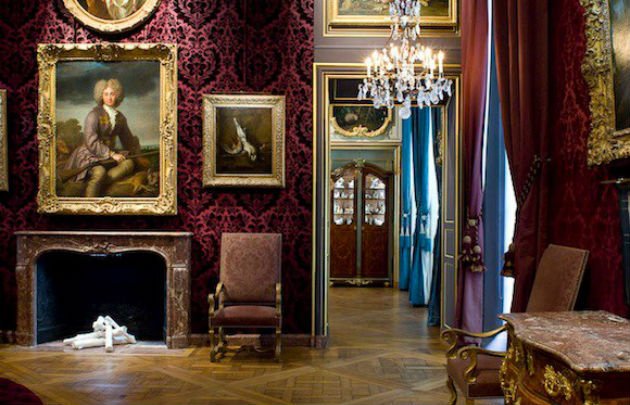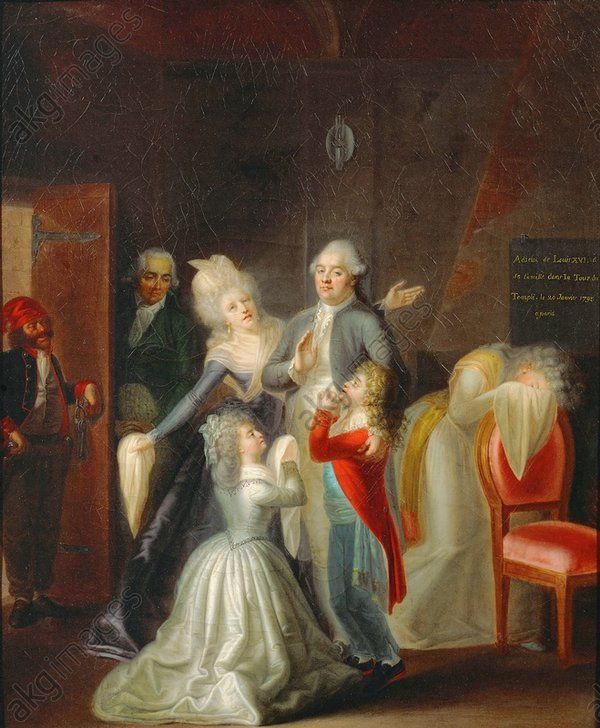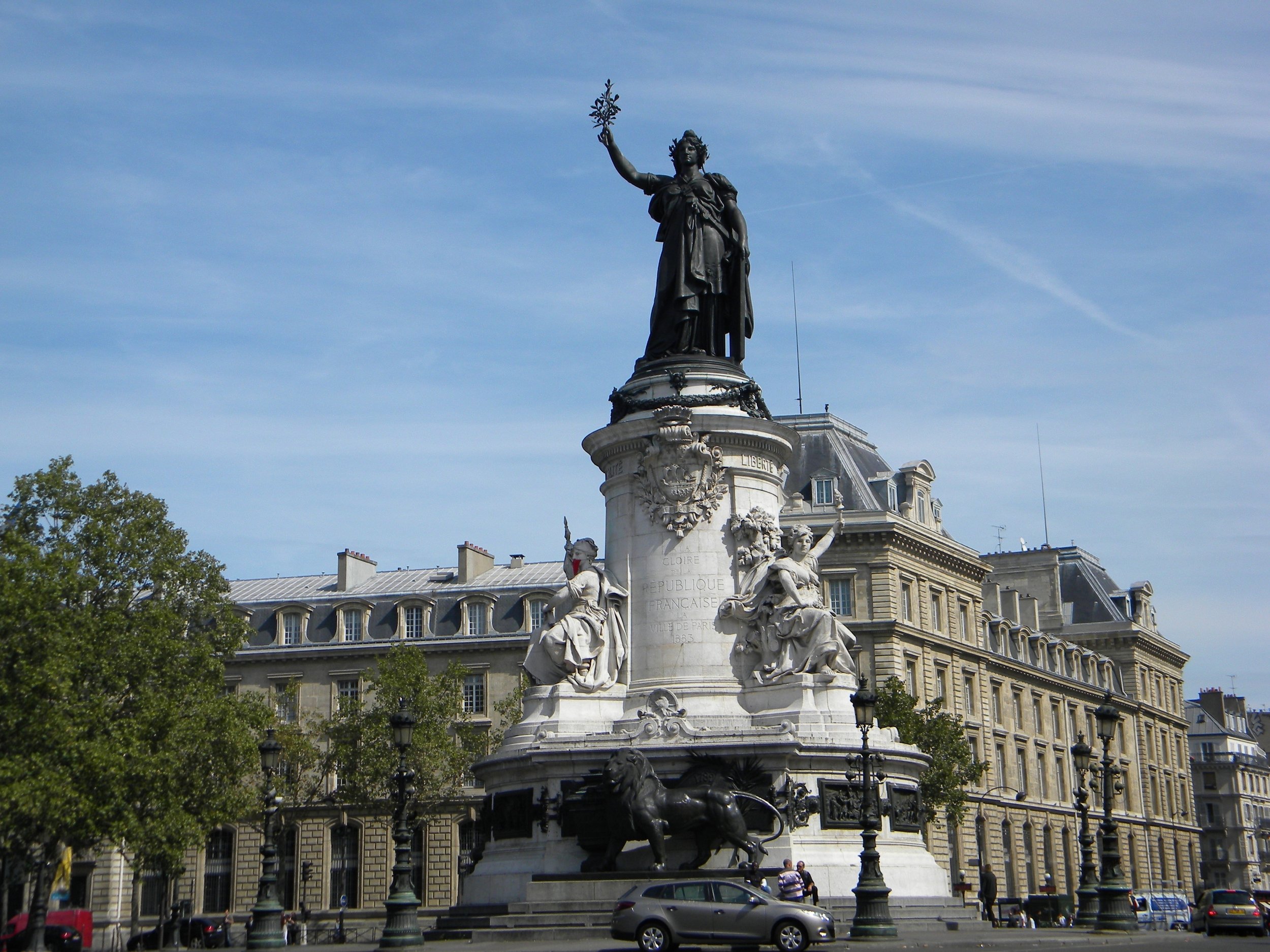Live from Paris - Haut Marais
Sunday, March 6, 2022
Musée de la Chasse et de la Nature, a hidden gem in a city with a museum for everything. It was created from the collection of François and Jacqueline Sommer who had a love for animals and nature. Originally based in the Ardennes, minister of culture under de Gaulle, André Malraux in 1964 found a new home for it in the Marais. The Hôtel de Guénégaud was built in 1652 by François Mansart and it is the only structure that remains in the city untouched from his original design.
Malraux took on a huge initiative to rehabilitate the historic structures of the Marais and he set his sights on the Hôtel de Guénégaud. The Guénégaud passed through many hands and generations before it was given to the city and opened in 1967. In 40 years it was growing out of its pace and the Hôtel de Mongelas next store was acquired in 2002 and in 2007 the new larger space opened to the public and allowed a space for special exhibits.
The first curator Georges de Lastic was the brains behind the operation and created the amazing layout of the museum that feels more like a regal home. The walls are covered with art dedicated to animals and nature and don’t miss the small room of the gun collection of the kings. Even if it’s not your thing they really are works of art.
Located at 62 rue des Archives in the 3rd
Open Tuesday-Sunday 11am-6pm Wednesdays until 9:30pm (except July & August)
10€ or 12€ if there is also a special exhibition
No 72 rue des Archives. Hôtel Villeflix and also no 70 were built on the property once owned by Marguerite Simm, wife of François de Montescot who was close with Louis XIV and had the extra large home torn down to build two large homes instead. In 1656 Louis de Bailleul, president of the Parliament of Paris moved in and then Louis François Vireau de Villeflix, master of the king's coffers, added a bit more decor as well as the allegories over the door.
No 76 rue des Archives is the Hôtel Le Peletier de Souzy. Above the door is a relief of attributes of a warrior as well as the initials ove the door of the former owners. OLB for Octavien Le Bys and MDA for his wife Marie d’Aluymare. From the street while the two doors are different the inner courtyard is split by a thin wall. Antoine Landry designed both 74 and 76 and were built at the same time in the mid 17th century.
No 78 a lovely wood door and cherubs at the top of the Hotel de Tallard. Built in 1702 by Pierre Buillet who also designed the Port Saint Martin. Denis Aelot de Chaillon first lived here until 1722 when the Duc de Tallard, Camille d’Houston moved in.
The stretch of rue des Archives from the museum until number 78 were built between 1650 and early 1700’s. Of the 10 originals 8 still remain.
At no 67 what is today a post office was once the site of the Hôtel Fabry and built in the 1600’s. It was torn down in 1949 but the painted beams and ceilings were saved and are now in the Hôtel de Sully another great place to visit just down the street and rarely visited by tourists.
If you are a fan of the classic black and white photography of Paris of the past, add the Fondation Henri Cartier Bresson to your list of places you must see. Originally opened in Montparnasse in 2003 and moved to this location in 2013. Henri was born August 22, 1908 in Chanteloup-en-Brie and started out as a painter and hung out with the Surrealists. While serving in the military and station in the Cote d'Ivoire he picked up a camera for the first time. His gorgeous photos of Paris are some of the most iconic images of the city ever seen.
79 rue des Archives
Open Tuesday-Sunday 11am-7pm 9 €
The nearby Marché des Enfants Rouge was named for the Hopital des Enfants Rouge that once stretched across the street and where the Archives ended. The sister of François I, Marguerite de Navarre asked for money and help for the children that were dying in the hospital. It was crowded that children could not be cared for and most died before ever being taken care of.
Of course he agreed and the sick children were able to get help and survive. They were all dressed in red which is where the name comes from that is now shared with the nearby market as well. The hospital thrived for almost 300 years until Louis XV no longer wanted to fund it. There had been many more facilities added between François and Louis XV.
The building was split up into five separate lots and in 1796 three were completely destroyed when rue des Archives was cut through. In the entry and courtyard of no 90 on the east side of the street you can see a bit of what is left and also across the street on the north and west side, a few of those walls were once a part of the hospital that saved the children.
Rue des Archives ends in front of the spot that was once the Tour de Temple. Built in 1240 for the Templars it was once outside the edge of Paris. The four tall turrets, two large and two small were turned into a prison for some very special guests on August 13, 1792. The family of Marie Antoinette and Louis XVI. At first they were all together in a few rooms of the smaller tour, including the former office of the librarian that was filled with books.
On September 29, Louis XVI was removed from the smaller tour and separated from his family. The windows were covered with blinds so he couldn’t communicate with anyone. Louis XVI spent all his time reading and said that he finished over 250 books from August 1792 until his death. On December 11, 1792, 361 people voted for his execution, against 360 who voted for it. On January 21, 1793 he was killed by guillotine.
Back at the tower his family found out from the screaming crowds below their windows. Marie, her sister in law Elisabeth along with her daughter Marie-Therese and son Louis- Charles, now Louis XVII remained together until July 3, 1793 when he was taken from them. The royalty was out and the eight year old Louis-Charles was not going to be king but they wanted to be sure that if that was to happen that they would brainwash him and change everything he had learned from his parents.
On August 2, 1793 it was Marie Antoinette’s turn. Ripped from her family and taken to the Conceregie on the Ile de la Cité where she would later learn at her trial what terrible things they had forced her son to believe. On October 14 her trial began. One of the charges implicated that she had sexually abused her son and that he confessed to it. She was heartbroken and begged the women of the courtroom to believe her. Her fate was sealed long before the trial.
At 4:30am on October 14, 1793 she was convicted and sentenced to death that would come just five and a half hours later in the same spot her husband was killed. At the tour her son would never learn the fate of his mother. For two more years he was treated terribly without any hygiene, little food, constantly giving him wine and liquor instead of water and in a small dark room. On June 8 1795 after six horrible months he died at just ten years old, spending three of them here.
There was one survivor, Marie-Therese or Madame Royale. The only member of the family to survive was finally released on December 19, 1795 in a trade with Austria for French prisoners. It wouldn’t be until then that she learned of her mothers death, over two years later. We did a four part podcast episode of the life of Marie Antoinette and episode four is about Madame Royale and what she became after those difficult years. Listen to it here.
In 1808 Napoleon had it torn down when his opponents were using it as a symbol to the former Bourbon dynasty. Today in it’s place to the east is the mayor's office of the Paris Centre which on July 11, 2020 combined the mayors of the 1st through 4th arrondissements. This former office of the 3rd arrondissement now is the seat, (all though the other 3 still remain, France…)
Opposite is the lovely English style Square du Temple- Elie Wiesel that was created in 1857 under Haussmann and Napoleon III. The rocks in the water feature come from Fontainebleau and the lovely iron musician kiosk dates back to 1900.
In 2016 the mayor of the 3rd wanted to change its name to the Square Elie Wiesel but people were rather attached to the Square du Temple so it was agreed that the name would be lengthened. Elie Wiesel was born in Romania and at 15 he and his entire family were sent to Auschwitz. His mother and youngest sister were killed upon arrival and his father shortly followed. In April 1945 he and his two surviving sisters were released when the ally troops arrived and he eventually made his way to Paris where he attended the Sorbonne.
Through the rest of his life he wrote about his time at the concentration camps and what he saw. He help opened centers and museums dedicated to the Holocaust and those that were lost and also lived through it. In 1963 he became an American citizen and in 1986 won the Nobel Peace Prize. When Klaus Barbie went on trial for the horrible acts he was involved in, Weisel was there as a witness. He died on July 2, 2016 but his fight and memory still goes on.
Just across from the mayor’s office is the Carreau du Temple. A stunning cast iron and glass building that covers the block. A market stood in this area since the Middle Ages. Over time goldsmiths, linen and fur merchants were all set up here. Eventually a large stone rotunda was built to house them but as the city expanded so did the markets and this one was taken over by scammers and thieves. In 1863 the stone building was demolished and Ernest Legrand and Jules de Mérindal designed this lovely cast iron pavilion. There were once 6 of these that covered the area, now all that remains are these two. In 1976 the old mayor across the street wanted to destroy these and put up a parking lot but was met with a lot of oppositions and the people won. Restored from 2007 to 2012 it was opened to the public in 2013. It now holds special events including the fashion show today, March 6, 2022 from the house of Valentino.
Just down the street at the corner of rue Dupetit-Thouars and rue Gabriel Vicaire is an old plaque showing the map of the area and where the tower prison once stood. Don’t miss this when you visit.
At the end of the street is the lovely Église Sainte Elisabeth de Hongrié. First built under Marie de Medici who laid the first stone on May 14, 1643 which was also the 33rd anniversary of her husband, Henri IV death. Construction was halted along the way and finally finished under Anne of Austria, wife of Louis XIII. Sainte Elisabeth of Hungary was the daughter of King Andree II of Hungary. She was betrothed at 4 years old to Louis IV of Thuringia in 1221. Six years later he would die and she hung up her crown and devoted herself to the church.
Elisabeth died at just 24 years old after devoting her life to the poor and starving people of the town. Named a saint after her death, her miracle attributed to her was of a lovely bunch of roses. Always giving to others she would sneak out loaves of bread under her cloak to take to the hungry. One day her husband stopped her and asked what she had under her cloak and instead of bread she said roses. As he opened her cloak all he found was stems and stems of roses.
We end the walk today at the Place de la Republique where Marianne stands proudly over the city. The intersection of the 3rd, 10th and 11th arrondissements was once just a small park named the Place du Chateau d’Eau for the fountain that served the area water. Under Haussmann It was turned into a larger area with a roundabout with bronze lions around a larger fountain by Gabriel Davioud. In 1879 the city decided it needed a new monument dedicated to the 90th anniversary of the Revolution.
A contest was held and the design of Léopold and Charles Morice was chosen. However second place wasn’t too shabby either so the Marianne of Jules Dalou was picked for the Place de la Nation. The version we see today was inaugurated in gypsum on July 14, 1880 and three years later on the same day in 1883 she was finally revealed in all her bronze glory.
Marianne, the symbol of France, stands holding a olive branch in her right hand while her left hand rests on the tablet of the Droits de l’homme. Below her are three statues, Liberté, Égalite, Fraternité each of the theological virtues and motto of France. Liberté holds a torch of freedom and on her right knee she holds the broken chains. Égality holds up the flag of the republic and a level on her lap with the initials of the Republic, RF and a symbol of equality. Lastly there is Fraternité with the kids at her feet, an allegory of knowledge and a wheat wreath and bouquet for abundance.
Below is the proud lion that guards the ballot box and around the base are twelve high reliefs marking a major moment leading from the Revolution to the Republic.










